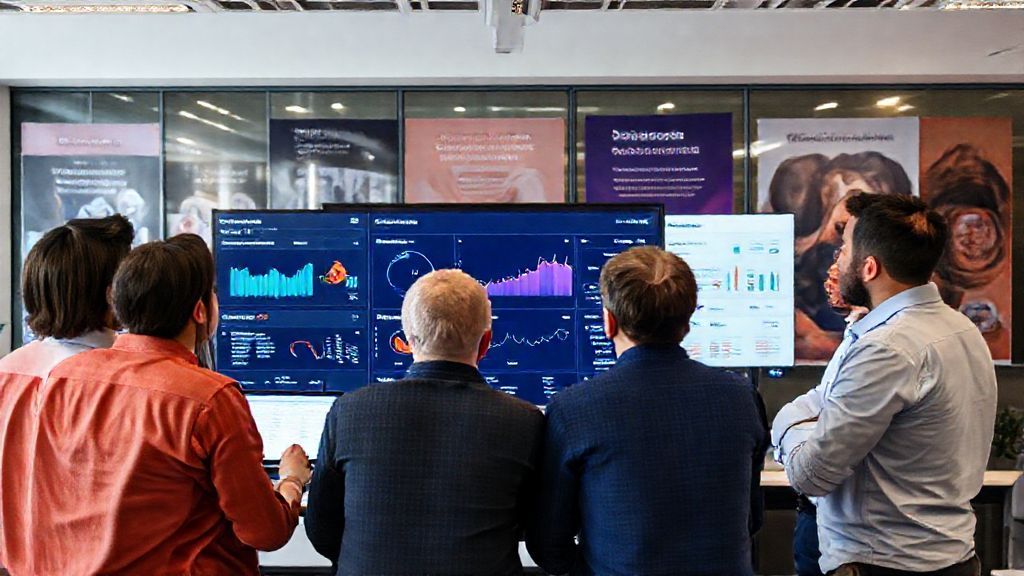AI Customer Acquisition in the New Era: Leading the Future with Advanced Technology and Platform Innovation
In today's rapidly evolving digital age, businesses face increasingly fierce market competition, making AI customer acquisition a new trend. This article covers various applications of AI technology in acquiring customers, analyzes significant changes brought by successful examples such as DeepSeek V3, and discusses how knowledge platforms like Quora provide potential resources for businesses and new business opportunities across industries.

Quora Lead Generation Maximizes the Effectiveness of AI Customer Acquisition
A key function of B2B AI software involves precisely screening and collecting target user information from various data sources. The prominent Q&A website Quora becomes an ideal partner because it offers extensive and diverse discussions on topics ranging from emerging issues in various industries to broader directions. It's a treasure trove for marketers aiming to expand their brand influence or penetrate international markets.
From a data perspective, Quora's platform boasts millions of high-quality content pieces and billions of interactions. Utilizing these resources can reveal unexplored niche markets. Directly sourcing from here ensures higher authenticity and authority compared to relying on third-party databases. With advanced NLP and semantic parsing techniques, we can identify common traits within similar interest groups, organize them for actionable lists, setting solid foundations for subsequent marketing efforts.
It’s important to adhere to local regulations and respect privacy rights, ensuring all actions comply with legal standards. Integrating Quora into an overall marketing strategy is viable and effective.
Analyze Current Hot Events to Explore the Broad Prospects of AI Customer Acquisition
Recent breakthroughs in domestic AI technology have garnered much attention, notably the launch of DeepSeek V3 from Hangzhou, showcasing cost-effectiveness while excelling in evaluations, thus extending high-end benefits to smaller players. This quality-and-affordable advantage democratizes access to cutting-edge technologies.
Regarding AI customer acquisition, traditionally manual processes are replaced by AI-powered solutions which quickly assemble comprehensive databases and enable broad, targeted marketing campaigns. Efficiencies achieved free time for creative, human-centric initiatives.
Moreover, advancements abroad (like iFlytek's big model trademark) signify positive developments aiding industry progress across various fields, highlighting increased awareness around AI impacts on education, entertainment, manufacturing. Within a few years, AI customer acquisition is expected to see explosive growth and permeate all sectors' operations.
A Robust B2B Tool Ecosystem Forms a Critical Foundation for AI Customer Acquisition
An effective B2B ecosystem integrates components like online transaction management, supply chain optimization, and payment processing modules. All components must efficiently operate together to maximize AI customer acquisition. Some platforms cater specifically to cross-border trade, adding features such as auto-matching products based on buyer behavior and promotional notifications.
Additionally, AI voice assistance provides 24/7 customer support, reducing response times and easing human agents’ workload. For long-term clients, tailored solutions offer personalized care, enhancing loyalty. Secure information transmission also remains crucial; blockchain applications ensure traceable transactions and reduce fraud risk.
Constructing a comprehensive, multi-faceted AI-support B2B business system is critical for driving industry development forward.
Future Trends Prediction: AI Technology to Pioneer More Innovative Models
Trends in the industry point towards three major directions: diversification, specialization, and humanization, leading to deeper integration of AI with other sectors. Examples include Microsoft's materials generation with MatterGen and India's film dubbing with NeuralGarage, expanding application boundaries and sparking innovations.
Looking forward, within AI customer acquisition alone, vast possibilities exist. Advances in IoT will refine prediction models for scientific strategies. Innovations combining social commerce and VR may produce unprecedented shopping experiences, attracting Gen Z consumer support for domestic brands. As progress continues, exciting scenarios await every visionary individual in writing the chapters of this epochal period.


